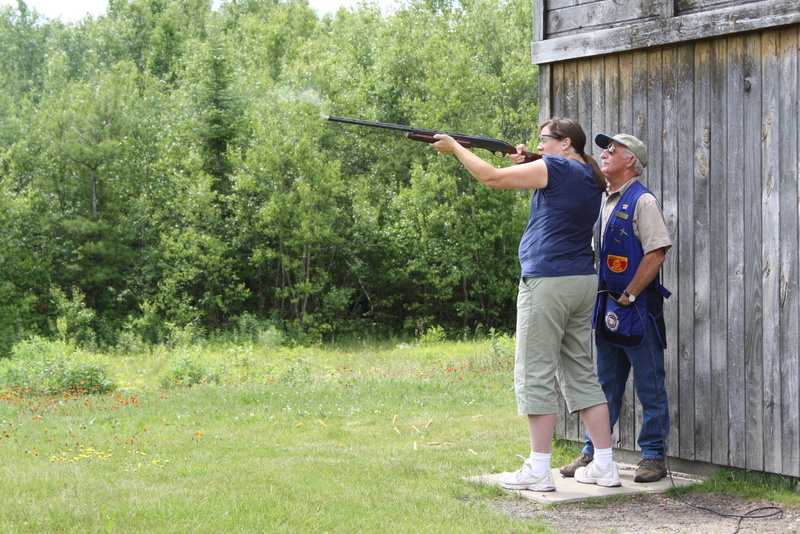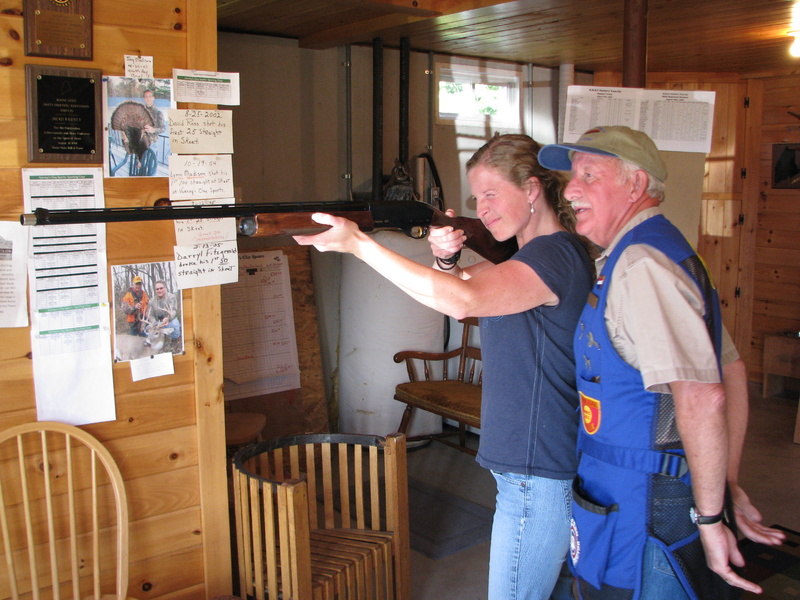In that prized position over the family room fireplace — where keen shooters might display a pair of antlers or a taxidermied goose — I could mount half a dozen pigeons.
Orange, disk-shaped clay ones.
The idea is absurd, of course, because I don’t have a fireplace. And gathering those scattered clay bits in the field at Varney’s Clay Sports in Richmond would have been no easy task. But when you’re first learning to raise a shotgun to your shoulder and train your eye on a flying target, each splintered piece of clay is something to be proud of.
At Varney’s, owner and wing shooting instructor Brad Varney likes to make sure every student feels plenty of that clay-shattering pride. Varney’s is the home of the “Have Gun, Will Teach” shooting school, and Varney is confident he can teach anyone to shoot.
If you can swing a hammer and hit a nail or swat at a fly on your arm, Varney says he can have you skeet shooting in no time.
He’ll load you up with anecdotes and a bit of wise-cracking, too.
“I’ll take credit for the misses — and I don’t like to miss, so there won’t be many of those,” Varney said. “You’ll take credit for the hits. How’s that?”
My colleague Wendy Almeida and I quickly learned, however, that safety here is serious business. The “Think Safety” signs on the field and in the office are constant reminders that, while skeet shooting is a competitive and enjoyable sport, a shotgun is a potentially dangerous piece of equipment.
To help ensure our success on the field, Varney also needed to look us in the eye. He tested our eye dominance with a handy T-shaped piece of PVC piping. The plastic contraption was yet another of Varney’s high-tech analytical apparatuses, he joked.
Varney then pulled out a sheet of colored circular stickers and placed one on the left lens of my safety glasses.
The sticker helped fog the vision in my left eye, meaning I could keep both eyes open while shooting without the two squabbling over which was in charge.
Add in a couple of earplugs and we were ready to meet the skeet.
A skeet field features eight positions — seven of which form a semicircle, with the eighth located halfway between stations one and seven. A trap house sits on both ends of the semicircle.
The clays are launched from these houses. The height and position of the launched clays are impressively precise.
At station one, Varney reminded me to keep my stance forward and my front leg bent. I loaded a shell into the chamber, clicking the button to close it. I raised the 20-gauge, pressing the butt firmly into my shoulder and my cheek into the gun’s side.
I kept my weight on my front foot and leaned forward, Varney adjusting my positioning and hand placement.
“Pull,” I called out, prompting Varney to hit a button releasing a clay target from the trap house.
The orange disc sailed through the air — a woefully one-sided game of Frisbee. My eyes followed. My finger tightened on the trigger. The firing pin released, sending a spray of lead pellets into the sky. And the target sailed on uninterrupted until it coasted into a grassy landing downfield.
“Did you keep your eyes in front of the target?” Varney asked.
He already knew I hadn’t, being trained to notice the momentary pauses or drifts in gaze. So I tried again. And missed again.
But as the third target sailed its unpiloted course, I kept my gun pointed just a smidge ahead of it. I pulled the shotgun trigger, bracing against the kickback, and the clay shattered in flight, a faint orange firework in a daylight sky.
Success.
Varney’s self-proclaimed ability to “teach anyone” stands another day.
Staff Writer Shannon Bryan can be contacted at 822-4056 or at:
sbryan@pressherald.com
Send questions/comments to the editors.



